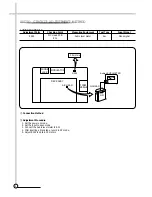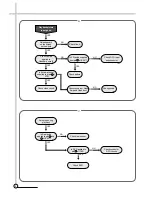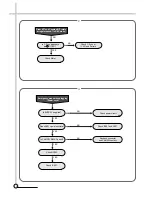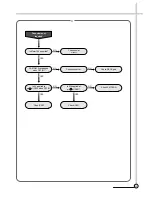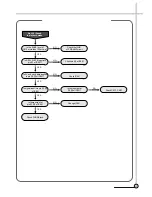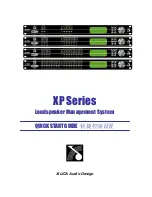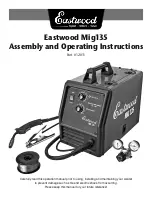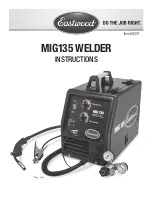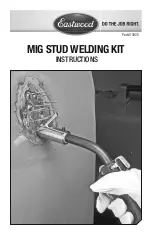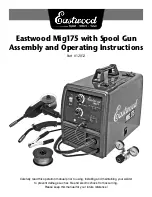
S
AFETY
C
H E C K AFTER
S
ERVICING
Examine the area surrounding the repaired location for damage or deterioration. Observe that screws, parts and wires
have been returned to original positions. Afterwards, perform the following tests and confirm the specified values in order
to verify compliance with safety standards.
1. Insulation resistance test
Confirm the specified insulation resistance or greater between power cord plug prongs and externally exposed parts of
the set (RF terminals, antenna terminals, video and audio input and output terminals, microphone jacks, earphone
jacks, etc.). See table below.
2. Dielectric strength test
Confirm specified dielectric strength or greater between power cord plug prongs and exposed accessible parts of the
set (RF terminals, antenna terminals, video and audio input and output terminals, microphone jacks, earphone jacks,
etc.) See table below.
3. Clearance distance
When replacing primary circuit components, confirm specified
clearance distance (d), (d') between soldered terminals, and
between terminals and surrounding metalic parts. See table below.
Table 1: Rating for selected areas
* Class
II
model only.
Note: This table is unofficial and for reference only. Be sure to confirm the precise values for your particular country and
locality.
4. Leakage current test
Confirm specified or lower leakage current between B (earth ground, power cord plug prongs) and externally exposed
accessible parts (RF terminals, antenna terminals, video and audio
input and output terminals, microphone jacks, earphone jacks, etc.)
Measuring Method: (Power ON)
Insert load Z between B (earth ground, power cord plug prongs)
and exposed accesible parts. Use and AC voltmeter to measure
across both terminals of load Z. See figure 2 and following table.
Table 2: Leakage current ratings for selected areas
Note: This table is unofficial and for reference only. Be sure to confirm the precise values for your particular country and
AC Line Voltage
Region
Insulation
Dielectric
Clearance
Resistance
Strength
Distance (d), (d')
100V
Japan
≥
1 M
Ω
/500 V DC
1kV AC 1 minute
≥
3 mm
110 to 130V
USA &
– – –
900V AC 1 minute
≥
3.2mm
Canada
* 110 to 130 V
Europe
≥
4 M
Ω
/500 V DC
3 kV AC 1 minute
≥
6 mm (d)
200 to 240 V
Australia
≥
8 mm (d')
AC Line Voltage
Region
Earth Ground
Load Z
Leakage Current (i)
(B) to:
100V
Japan
¡
≤
1m A rms
Exposed accessible
parts
110 to 130 V
USA &
¡
≤
0.5 m A rms
Exposed accessible
parts
¡
≤
0.7 m A peak
Antenna earth
110 to 130 V
Europe
¡
≤
2 m A dc
terminals
200 to 240 V
Australia
¡
≤
0.7 m A peak
Other terminals
1k
1.5k
1.5kµF
2k
50k
d
Primary circuit termimals
Chassis
d'
a
Z
Exposed
accessible
part
AC Voltmter
(high impedance)
Earth Ground
power cord plug prongs
B
Fig. 1
Fig. 2
INFORMATION
Summary of Contents for DV-K11WZ-PB/A
Page 30: ...27 6 CIRCUIT DIAGRAM CONNECTION DIAGRAM...
Page 31: ...28 POWER CIRCUIT DIAGRAM...
Page 32: ...29 SERVO SYSCON CIRCUIT DIAGRAM...
Page 33: ...30 VIDEO HEAD AMP CIRCUIT DIAGRAM...
Page 34: ...31 AUDIO CIRCUIT DIAGRAM...
Page 35: ...32 HI FI AUDIO CIRCUIT DIAGRAM...
Page 36: ...33 KARAOKE CIRCUIT DIAGRAM...
Page 37: ...34 LOGIC SW CIRCUIT DIAGRAM...







